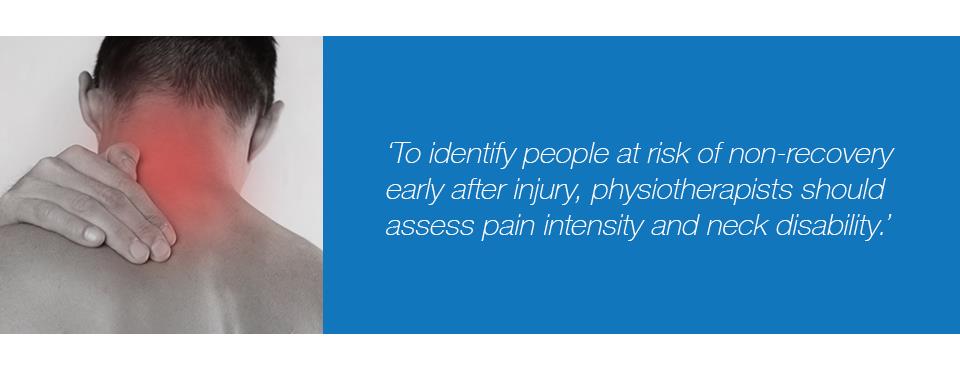This article by Dr Trudy Rebbeck and Professor Michele Sterling was published in InMotion on 5 October 2016
New whiplash guidelines released by the State Insurance Regulatory Authority (SIRA) will help physiotherapists to manage their patients with whiplash. The updated guidelines draw on multidisciplinary research and clinical expertise in whiplash.
The guideline committee was well represented by physiotherapists including this article’s authors (Dr Trudy Rebbeck, FACP, and Professor Michele Sterling, FACP), and Professor Lisa Harvey, APAM.
Rigorous scientific methods are used to produce such guidelines, including basing recommendations on systematic reviews and ensuring representative bodies such as the APA have the chance to provide input. These methods ensure that physiotherapists can trust the recommendations to guide their practice.
There are three main messages in the new guidelines for physiotherapists: identify people at risk of non-recovery early after injury; provide reassurance, neck-specific exercises and advice on remaining active; and monitor progress, taking action if patients are not recovering.
To identify people at risk of non-recovery early after injury, physiotherapists should assess pain intensity and neck disability. High scores indicate poor recovery. The guidelines explain the cut-off scores, such as pain intensity of greater than 5/10 or neck disability of greater than 15/50 on the Neck Disability Index being some of the indicators for poor recovery. The guidelines also provide assessment tools to conduct these assessments.
Recently, this information has also been incorporated into a clinical prediction rule that physiotherapists can complete online as part of a novel clinical trial, the Whiplash ImPaCT trial, to assess their patients’ risk.
Patients at low risk should recover well with guideline-based care.
Physiotherapists have the ideal professional skills to implement key treatments recommended by the guidelines, such as advising patients to remain active, providing reassurance and prescribing neck-specific exercises. Online resources have been developed to complement these recommended treatments, including a new whiplash video for injured people (Get moving), and websites with explanations and videos of the exercises.

The final thing for physiotherapists to remember is to monitor progress of their patients and take action if they are not recovering. This is most likely to occur when patients are at moderate or high risk of non-recovery. Such patients can have complex presentations and may require different treatment, often outside the scope of the guidelines.
It’s recommended that you refer these patients to a clinician with expertise in whiplash management who can provide advice to the primary carer. This referral process is often not followed, either due to difficulty in accessing clinical experts or concern about losing patients. However, clinicians with this level of expertise are often physiotherapists who have undergone specific training or clinical specialisation, or they provide independent peer reviews.
To date, focus group feedback has supported this care pathway for people at high risk of non-recovery, which is great news for the profile of physiotherapists within complex whiplash management.
Physiotherapists and their patients are encouraged to take part in the Whiplash ImPaCT trial that will test whether this clinical pathway of care helps in whiplash recovery. This will be the first trial to investigate a clinical pathway that utilises the spectrum of physiotherapy care, from primary through to specialist care.
All physiotherapists are urged to utilise the key resources to help implement these guidelines but, more importantly, to assist their patients’ recovery.
Physiotherapists who are interested in participating in the Whiplash ImPaCT clinical trial should contact Griffith University or the University of Sydney.
Whiplash resources
Resources for patients include:
- Online videos of neck–specific exercises, available at sira.nsw.gov.au and mywhiplash.com.au
- Customised exercise sheets, available at physiotherapyexercises.com
- Get moving whiplash video
- Whiplash fact sheet
Resources for physiotherapists include:
Updated 6 April 2020